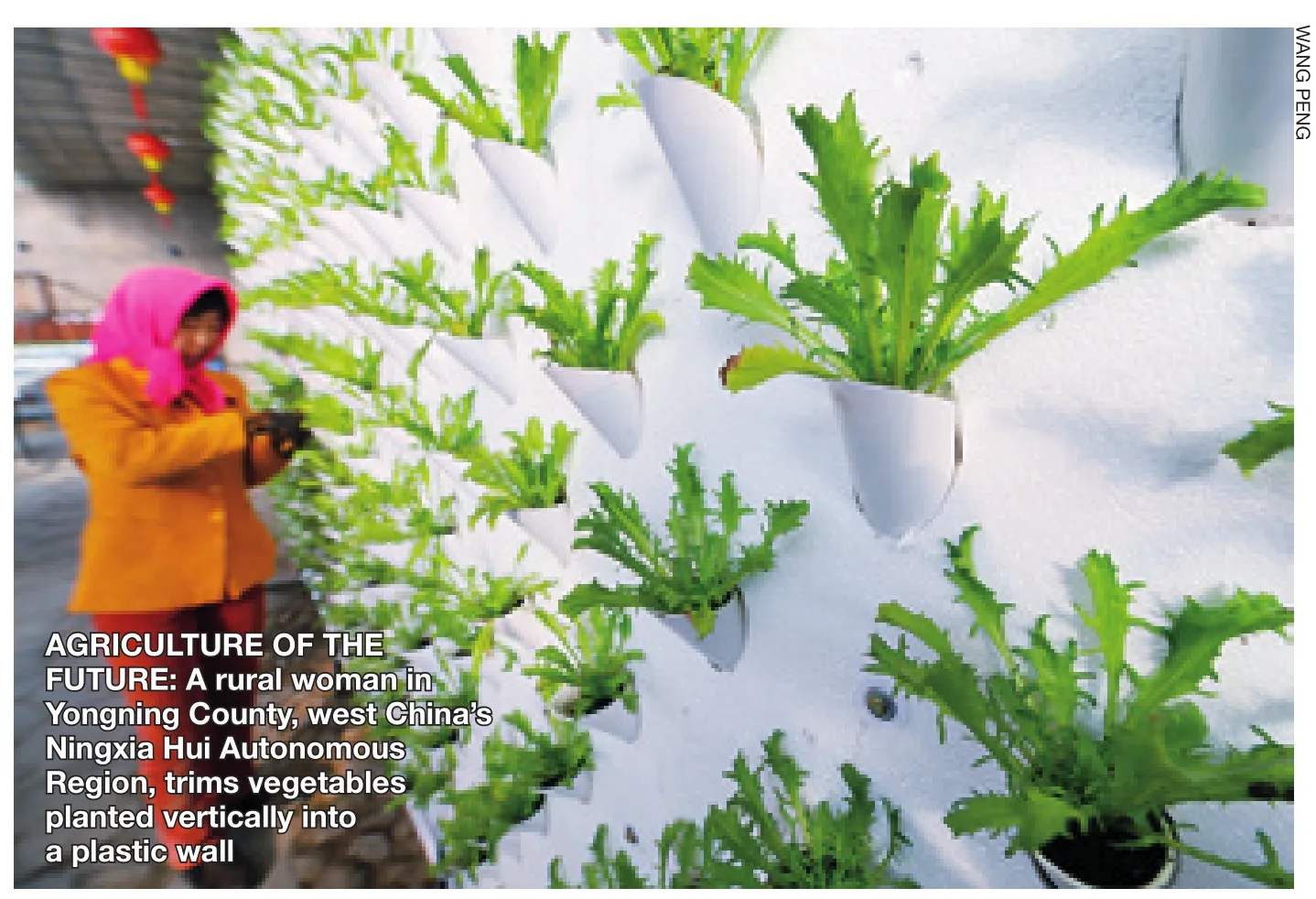Rural Imperatives
The No.1 Document outlines plan for agricultural efforts
By LAN XINZHEN
Many economists predicted the No.1 Document, issued by the Central Committee of the Communist Party of China and the State Council, would have as its top priority the structural adjustment of the economy given the impact of the global fi nancial crisis and contradictions within China’s economic growth. But they were wrong. The document, issued on February 1, continues to target primarily rural issues for the seventh consecutive year.
The importance of the three rural issues, as well as the bottlenecks surrounding them, are among the most frequently asked questions from foreigners interested in China’s development.
The three rural issues concern the future of China’s vast countryside, the welfare of the 900-million rural population and the prospects for China’s agriculture.
One of the most basic concerns surrounds the farmers’ inability to make enough money to live a better life. Until agricultural industrialization covers and hence benefits the majority of Chinese farmers, farming pro fi ts will remain considerably low.
A gross rural-urban divide also plagues the country. While the commercial wealth of the big cities is likened to that of Western developed urban centers, the remote regions of China conjure up images of Africa. Whether the country can bring urban prosperity to the countryside rests on the government’s ability to increase farmers’ incomes, boost the growth of the rural economy and improve the production ef fi ciency of the agricultural sector.
The rural issues facing the country are not, however, unique to China. Similar situations have played out in almost all of today’s industrial nations. The problems are just byproducts in the process of an agricultural society evolving into an industrial one.
The three rural issues have become the Chinese Government’s top concern for years largely because of the country’s colossal population, which makes any remarkable economic achievement seem insufficient. In addition,the development of the agricultural sector has failed to catch up with the pace of China’s industrial development due to the sector’s problems multiplying and overlapping for decades,which has only complicated the issue. Yet,China remains an agricultural country—900 million of its total population of 1.3 billion is registered as farming population, which could affect the stability of Chinese society if these concerns are not prudently addressed.
With this consensus in mind, the Central Government has already introduced an array of policies to address rural problems, including implementing the land tenure reform last year, expanding fiscal expenditures for related rural issues and abolishing the agricultural tax effective from 2006. Still, there are many dif fi culties to steer China’s countryside to common prosperity with the cities.

The main problems fall into three categories∶ grain security, agricultural industrialization and transfer of rural surplus labor.
Grain security issues include∶ the growth of the rural population but the disappearance of arable land and planting areas for crops; a lack of breakthroughs in the per-unit yield of crops in the near future as the total output of major farm produce declines; the relatively low prices of agricultural products and the fl uctuating prices of non-grain products; the high prices of production materials compared to their quality; in addition to the increasing costs of the production of farm produce year on year compared to the diminishing fiscal revenue from the agricultural sector.
Improving farmers’ welfare is also among the issues facing the government. The rural-urban income disparity has widened compared with that before China’s reform and opening up in 1978, as is the case with the income disparity between farmers in different regions—a factor that has only made it harder to increase farmers’ incomes across the country. The existing household-based allocation scheme of farmland is not well suited for the large-scale, machine-facilitated pattern of modern agricultural production. Allowing technologies essential to modern agriculture to proliferate has also proved dif fi cult.
Farmers have found making a living outside the countryside all but impossible, and few jobs in urban areas accommodate rural surplus labor. China’s vast countryside additionally lacks a complete system of fi nancial,insurance, postal and commercial services—a burden on development that is only further restricted by insufficient funds, technology,administration and infrastructure construction.
Against the backdrop that China last year witnessed a bumper grain harvest for the sixth consecutive year and increased fi scal expenditures to promote the industrial development of agriculture, solutions to offer more jobs in cities for surplus rural labor are quickly becoming one of the top priorities of the Central Government.
Estimates from the Institute of Rural Development at the Chinese Academy of Social Sciences showed 200 million farmers at most are enough for agricultural production in China according to the country’s total area of arable land. But the countryside now has about 550 million active farmers, with nearly 300 million idling away their lives. The research institute says China will still face the problem of a severe labor surplus in rural areas in 40 years based on the growth rate of the country’s population compared with job availability increases.
The 300 million inactive farmers will be faced with no choice but to move to cities and towns to seek employment, which will pose a major challenge to China’s economic development in the years to come. ■

